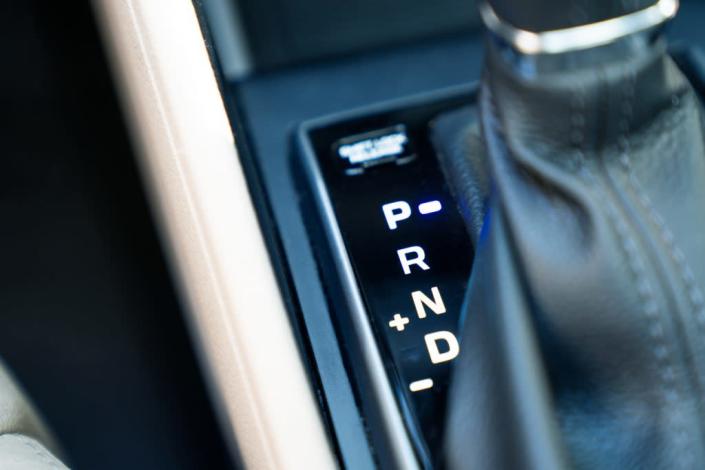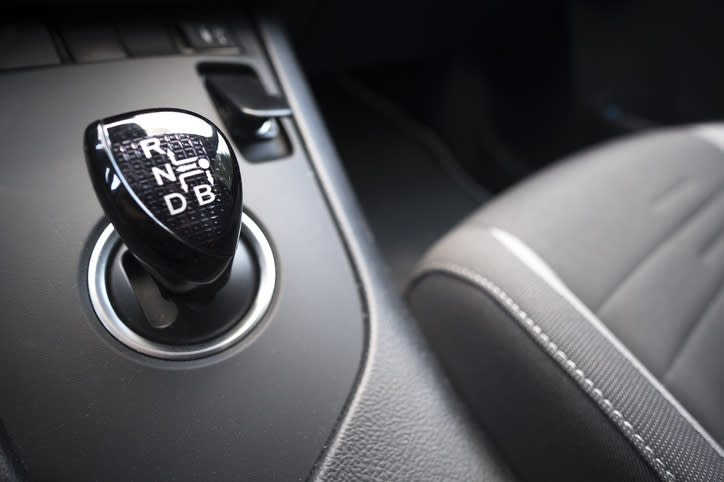
When it comes to transmissions, cars used to fall under two categories: manual and automatic. However, a third type of transmission is growing in popularity, creating a third option: the continuously variable transmission (CVT). The CVT is actually a type of automatic transmission, but the two have distinct differences. What are the differences between CVT and automatic transmissions, and is one type better than the other? We look at CVT vs. standard automatic transmissions to help you understand what you need to know.
What is a Continuously Variable Transmission? (CVT)

Long the bane of enthusiasts, the continuously variable transmission is exactly that – a transmission that is constantly varying the gear ratio for the conditions at hand. How is this possible? By not using gears at all.
How it does what it does is actually quite simple in concept: two conical-shaped pulleys are connected by a belt. The pulleys can shift location relative to each other, becoming wider or narrower as dictated by the vehicle’s computer; as they adjust, the distance the belt travels changes. As it changes, so does the ratio at which the engine power is transferred to the driven wheels. The changing pulley size, and the resulting change in total belt travel, is like a constantly changing gear ratio. This is how a CVT is like having infinite gears.
In theory, having an infinite number of gear ratios will always put you in the perfect ratio for the conditions at hand. Hard acceleration? There’s a ratio for that. Hypermiling? There’s a ratio for that, too. Trying to run a road course? There’s a ratio for every corner and every straight.
The downside to the CVT is that its behavior to accomplish this lies at direct odds with the proper behavior of an automatic transmission. With over one hundred years of having a set number of gears in our transmissions, we’re used to what’s called ‘stepped’ gears – the sense of our car ‘stepping up’ into a higher gear or ‘dropping’ into a lower gear.
The CVT doesn’t ordinarily operate like that. It’s instead in constant flux, adjusting to where it needs to be. In real life, this constant adjustment and lack of definitive gear shift points is unfamiliar and unnerving. And achieving maximum efficiency or power requires holding a set RPM for a prolonged period of time, resulting in constant engine droning with minimal change in exhaust note. It’s a lot less pleasing than hearing an automatic transmission snap off a quick shift when you floor the gas pedal.
The Standard Automatic Transmission: What It Is (and Why We Need It)

First developed by General Motors in the late 1930s, the fully automatic transmission made driving significantly easier and smoother by eliminating the need to manually shift gears (though the manual transmission has nonetheless remained available, even to this day). But why do we even need gears in the first place?
The best analogy is a bicycle. Imagine putting a 21-speed bike in top gear – gear three up front and gear seven out back. Now try starting off from a full stop. Difficult, right? It takes a lot of energy to turn those pedals one full revolution, and getting up to your top pedaling speed takes a long time.
Now imagine shifting down to the lowest gear ratio: gear one up front and gear one out back. Now starting off from a stop is easy, but if you don’t shift, you’ll max out your speed very quickly. When that happens, you’ll find yourself furiously pedaling without gaining additional speed.
The reason a single gear doesn’t cut it is because of what’s called a powerband. The powerband is that range of engine speed where the power is most smoothly, efficiently, and effectively being produced. You can feel when your car kicks you back into your seat during hard acceleration. In this situation, the car is working in the heart of its powerband and is being very effective at putting the power to the ground. Proper gearing makes this possible.
By having multiple gears of different sizes, you can always be in this high powerband no matter what speed you’re going. Low gears keep you in the powerband when starting off from a stop; high gears do the same at high speeds. If a gasoline engine had only one gear, it would be like our bicycle analogy – you would either be very slow to accelerate from a stop but have excellent cruising speed, or you would sprint away from a stop but unable to reach high speeds.
An automatic transmission shifts among a set number of gears automatically. No manual input is needed from the driver. Sensors and computers determine when a different gear should be selected. In this manner the car automatically gauges and responds to a driver’s inputs and driving conditions, always striving for the best combination of effectiveness, smoothness, and efficiency.
Easy to operate and predictable in its operation, the automatic transmission has long satisfied consumers. Its very predictability has since become a metric of all transmission performance – which is precisely why the CVT’s unusual power delivery has drawn criticism ever since it first made its way into a production car.
Pros and Cons of Automatic Vs CVT Transmissions

In a traditional automatic transmission, one of the drawbacks is the set number of gears. By having only, say, eight forward gears, the powertrain is forced to choose one of those eight cogs for every situation. There are no exceptions to this. These are the only gears – and therefore only gear ratios – for the car to work with.
Ordinarily, this is rarely an issue. But for fuel efficiency’s sake, a set amount of ratios limits the chances to reduce fuel consumption. This is solved with the CVT, thanks to its infinite ratios that keep the car performing at peak efficiency. The pulley system can constantly adjust to provide the perfect ratio for any given situation, thereby maximizing fuel economy. This is the biggest benefit of the CVT. This better fuel economy comes at the price of horsepower, which is why CVTs aren’t found on performance cars.
Better MPG is not the only benefit of the CVT. Compared to a conventional transmission, it’s lighter weight and has less moving parts – making it less complex. This means it can be more efficiently packaged in smaller vehicles than a typical automatic to provide better gas efficiency. It’s partly why it’s been used as a snowmobile transmission for years.
But the drawback with the CVT is its behavior as it constantly adjusts itself. Because there’s no sensation of a shift, it doesn’t feel natural. It also often holds the car’s engine at higher RPMs, as there’s no higher gear to shift to. The result is a droning sound from the vehicle’s engine that isn’t exactly musical in its quality.
To compensate for this, automakers have tuned CVTs to behave as traditional transmissions do, imitating both upshifts and downshifts in most conditions. This makes it feel more familiar to consumers but hurts efficiency, which ultimately takes away from the whole point of using this transmission in the first place.
Reliability has also been a concern with the CVT, and is another reason shoppers prefer the familiarity of the conventional automatic transmission. For instance, Subarus and Nissans of a certain age have been known to have CVT mechanic issues. In most of these cases, a simple transmission repair is difficult or impossible; transmission service technicians will often recommend replacing the entire CVT unit – which can be thousands of dollars – or they suggest buying a new car. Neither option is one owners want to hear.
Common automatics don’t suffer these sort of drawbacks. Reliability varies from manufacturer to manufacturer, but for the most part, they’ll last the life of the car. If they do act up, they can usually be fixed by specialists, and sometimes the remedy is as simple as changing the transmission fluid; if replacement is deemed necessary, a normal automatic transmission is also cheaper to buy than a CVT.
Cars With CVT

Both CVTs and automatic transmissions have valid reasons for existence, which is why plenty of automakers have fallen into either camp. Here’s a quick overview of some of the brands that have embraced CVTs across multiple models within their product lines:
Honda: Many of the latest Honda cars and SUVs use CVTs. However, certain models continue to use automatics as well. For instance, Accords with the 2.0-liter turbo engine have 10-speed automatics, while 1.5-liter models use CVTs. Honda has tuned their CVT to behave more like a traditional automatic, so don’t write off the 1.5-liter motor found in the Accord and CR-V even if you’re adamantly against the CVT.
Subaru: The very first production car to ever use a CVT was the 1989 Subaru Justy. After a near-twenty-year hiatus Subaru began using a CVT again in 2010; now all Subarus but the BRZ sports car use it. There’s been some known issues with early CVT models that necessitated a recall of 1.5 million cars, but later models have an improved design; to prove it, Subaru now offers a lifetime warranty for the CVT. We’d nonetheless recommend doing your homework before buying a used CVT-equipped Subaru.
Nissan: Another brand that began using the CVT in earnest in the early 2010s and suffered reliability issues; some owners have reported multiple transmission replacements in cars that haven’t yet seen six-figure mileage. Based on the internet, the problem is bad enough that if you visit any Nissan dealership you’re bound to see the service department working on at least one CVT car. To remedy this Nissan has extended the warranty coverage pertaining to certain years where the transmissions were particularly troublesome. The problems with Nissan CVTs are well documented, so do your research if you’re planning on buying a used CVT-equipped Nissan.
Toyota: Toyota uses a launch gear, which acts like the first gear in a regular automatic transmission. It then works as a CVT as the vehicle kicks into higher gears. These fixed gear ratios increase efficiency and drive quality.
The Bottom Line
Let’s be honest: change is hard. We’re creatures of habit, and anything not familiar we cast a wary eye on. The CVT’s much-maligned reputation is a victim of both our distaste for change and the issues that dogged early adopters of the technology.
Newer CVT vehicles promise better behavior, more reliability, and a heightened connection with the road. There are also mulitple benefits with this type of transmission: a more compact design, better gas economy, and lighter overall weight.
If you’re going car shopping, don’t immediately write off all CVTs. Instead, do research, take a test drive or two, and decide if this technology is right for you. Plenty of high-quality cars are equipped with CVTs, and there’s no reason to dismiss them from your short list for that reason alone.
More from iSeeCars.com:
If you’re ready to begin your own car buying process, you can search over 4 million new and used cars with iSeeCars’ award-winning car search engine that helps shoppers find the best car deals by providing key insights and valuable resources, like the iSeeCars VIN check report and Best Cars rankings.
This article, CVT Vs. Automatic Transmission: What’s the Difference?, originally appeared on iSeeCars.com.







More Stories
Toyota Automatic Transmission: Shifting Gears with Precision
8-Speed Transmission: Navigating the Road to Efficiency and Performance
Add Another One To The Stick Shift List — The 2023 Acura Integra Will Get A Manual Transmission!